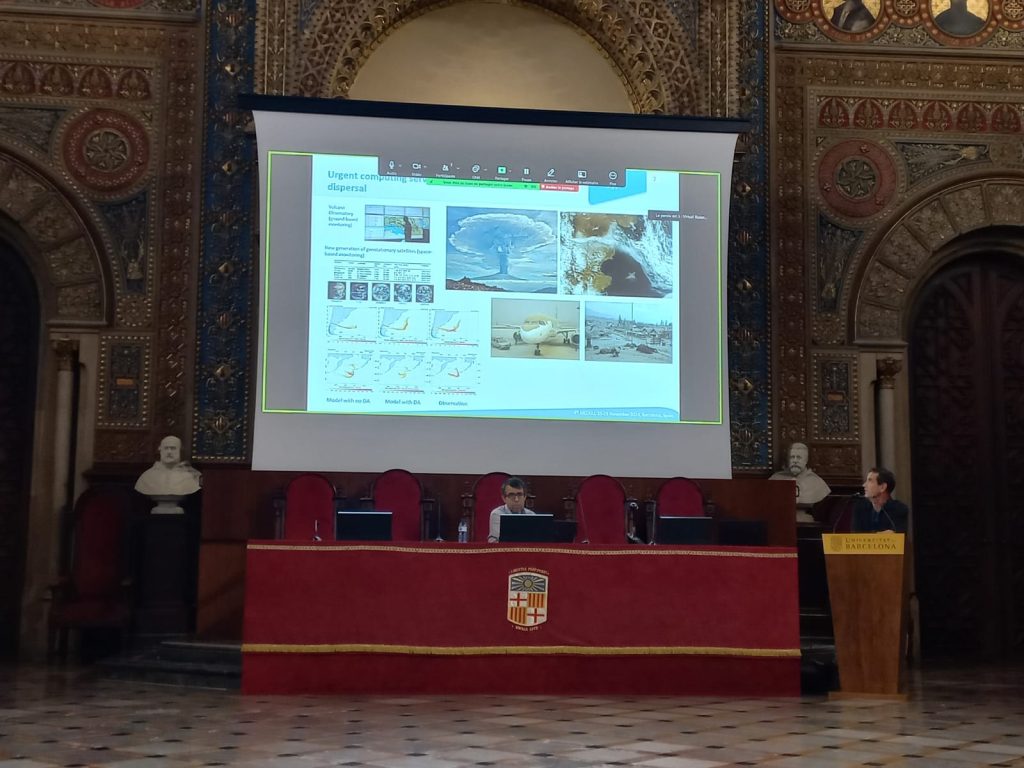DT-GEO at MedGU 2024: Recognition for Meteotsunami Modeling
At this year’s Mediterranean Geosciences Union (MedGU) conference, Alejandro González from the University of Málaga (UMA) was recognized with the Best Paper Award in Track 14: Urgent Computing and Early Warning Systems for Geohazards. His presentation, “Meteo-HySEA: Advanced GPU-Accelerated HPC Code for Simulating Meteotsunamis on Realistic Bathymetries,” highlighted ongoing developments in high-performance computing (HPC) applied to geophysical flows.
The Meteo-HySEA software, developed by UMA’s EDANYA group, demonstrates how GPU acceleration can efficiently simulate meteotsunamis in realistic settings. This work contributes to improving early warning systems for coastal hazards, which is an essential focus area for many researchers and institutions addressing geohazards.
Highlights from “Urgent Computing and Early Warning”
Track 14 brought together experts working on urgent computing and early warning systems, emphasizing how HPC can support decision-making in geohazard scenarios. Several presentations stood out, including contributions from DT-GEO researchers and collaborators:
- Using EuroHPC Supercomputers for Urgent Geohazard Computing
Arnau Folch, Josep de la Puente, and their team explored how the EuroHPC infrastructure supports real-time responses to earthquakes and tsunamis. - Challenges in Seismic and Tsunami Hazard Assessment
Natalia Zamora and her colleagues shared their experience using HPC workflows to refine assessments of seismic and tsunami risks. - High-Resolution Tsunami Simulations for the Andalusian Coast
Carlos Sánchez-Linares presented a study using high-resolution models to understand potential tsunami risks in southern Spain. - Probabilistic Tsunami Mapping at Stromboli
Juan Francisco Rodríguez Gálvez introduced a method for creating probabilistic tsunami inundation maps, showing how HPC can improve predictions for volcanic regions. - Meteo-HySEA: GPU-Accelerated Meteotsunami Modeling
Alejandro González’s award-winning work demonstrated how Meteo-HySEA simulates meteotsunamis on realistic bathymetries, with applications for improving coastal risk assessments. - Assessing Tsunami Risks in Northeastern Italy
Hazem Badreldin and collaborators examined the potential impacts of seismically-induced tsunamis in northeastern Italy, adding valuable insights to regional hazard studies. - Combining HPC and AI for Earthquake Response
Marisol Monterrubio-Velasco and Rut Blanco introduced a workflow that integrates HPC and AI to enhance emergency responses to earthquakes.
Collaboration and Progress
DT-GEO’s participation in MedGU 2024 showcased a range of efforts to address geohazard challenges, from advancing numerical models to exploring practical applications of HPC. The conference provided a valuable opportunity for researchers to share progress, discuss challenges, and highlight the role of technology in reducing the impacts of geohazards.




